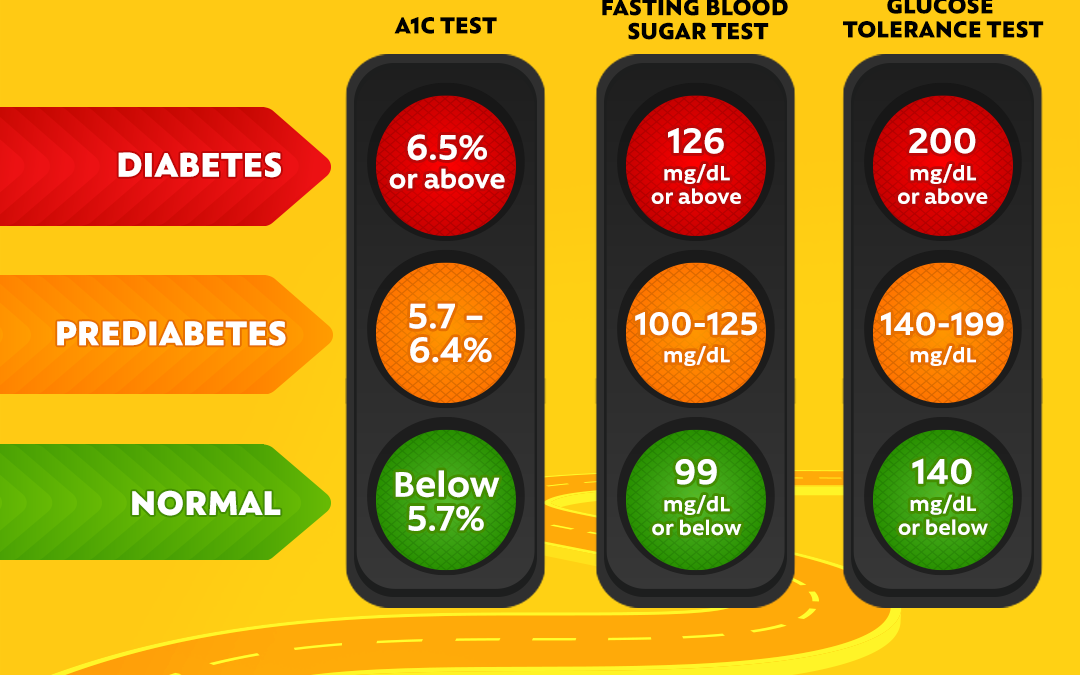
by I Dance With Diabetes | Aug 23, 2022 | Lifestyle
Managing type 2 diabetes through lifestyle
Managing type 2 diabetes through lifestyle is a term used to describe the manner in which we conduct ourselves from the time we are children all the way through to when we think of ourselves as adults. Of course, what we think and what we actually do can be vastly different, and over this period of our lives, we develop habits that will be common throughout the rest of them.
Key lifestyle habits play an important role in defining one’s health and body’s ability to function. Primary contributors include drinking, smoking, exercising, eating habits, willingness to be daring, etc. These have a significant impact on the life of people and will define how their health is maintained and their body’s ability to function properly throughout the course of their lives.
Another factor that comes into play is your ability to recognize or feel how your body is doing- one of the primary keys to successful self-care.
When you say, “I don’t feel right.” Can you say why? I smoke three packs of cigarettes a day for 20 years. I wonder why I’m coughing because I smoked for so long and might be wondering if quitting will help. Smoking can cause damage to the lungs and other organs in the body.
If you cannot make the connection between your diet and lifestyle changes, then you will not be able to manage your type 2 diabetes with them.

ARE YOU WILLING TO CHANGE?
Are you willing to make a lifestyle change? Studies done around the world are showing that being diagnosed with type 2 diabetes or having pre-diabetes doesn’t mean you have to take medicine for the rest of your life. You can instead increase your activity levels and improve your eating habits, which will help keep blood sugar within a healthy range.
The secret to finding a lifestyle that works for you and your condition is to modify your lifestyle with the things that will actually address it. Everyone is different, so what works for one person may not work for someone else.
Individual variations in human biology can make it difficult to directly apply solutions that have worked for one person to another person. However, recognizing the various bodily reactions that occur and making lifestyle changes based on these changes will lead to better health.
This is where your success will be found. Creating lifestyle changes is your way of being in control, of being in charge. Keep in mind that you are always in control and never at the mercy of any external circumstances.
HERE’S SUCCESS
One of the first lifestyle changes to undergo when living with type 2 diabetes is in your eating habits. A low-calorie menu has been demonstrated to be an effective tool in managing type 2 diabetes by providing significant reductions in the risk of developing the condition and improvements in blood sugar levels.
A study has shown that up to 24% of people were able to change their weight in a positive manner and maintained it for at least a year. At the same time, about 45% of the participants were able to lower their A1c levels from more than 6.5% down to below the cutoff point of 6.5% for at least twelve months.
This means that for people who were able to reach an A1c of 6.5% or less, many medications can be discontinued with the help of a family doctor. Of course, this only applies to those who have been following their doctor’s recommendations and are working towards reaching these goals.

It may seem like a no-brainer, but any changes to medications or dosages must be approved by a doctor. It should be noted that by making this type of lifestyle change, your body will be adjusting. Your doctor’s guidance in how to adjust your medicines is important.
Contemporary research has found that it is generally not necessary to lose a significant amount of weight in order to see the desired results, and a lesser amount can actually be more than enough.
Achieving a normal A1C level leads to excellent results when it comes to managing your weight, lowering blood pressure, lowering your BMI, and achieving a healthy weight level. You will also have better hunger management and won’t need to take insulin anymore.
It is important for people who are working to monitor the effects of their diet changes and use the gathered information to track how they are adjusting. Monitor your progress each week by recording your weight and body fat percentage, and make adjustments as needed. Every person will have their own unique results when dealing with their diabetes, meaning that it is hard to predict the possible effects of treatment and exercise. Vigilance is key in order to reach your lower A1C target and stay on task.
UNNOTICEABLE IN EARLY STAGES
Another thing to keep in mind is that type 2 diabetes is usually unnoticeable in the early stages. Normally, people only realize they are experiencing symptoms of type 2 diabetes when it has already progressed to a more advanced stage.
One might not even realize that they have had prediabetes or type 2 diabetes for a long time, and other medical conditions could develop which would cause other complications. This is a silent health threat. The diabetic condition is one that has left people with much more serious health problems. By following what is reviewed here you can improve your chances. Of course, following a trusted doctor and/or health professional is a key part of good health.
This includes cardiovascular-renal disease, which is an important thing to look out for. You should be able to find a doctor that will work with you and help you diagnose the issue. They should also be willing to work with you throughout your treatment process so that they can minimize the chance of any adverse effects from diabetes.
To learn more about diabetes and managing type 2 diabetes through lifestyle, please subscribe to our blog and follow us on Facebook, where people can learn from each other and share their experiences.
Read more: WebMD

by I Dance With Diabetes | Aug 23, 2022 | Signs & Symptoms
Introduction: What is Prediabetes & How do you Know if you Have it?
I’m concerned I have prediabetes, something you would like to avoid. Prediabetes is a condition that falls in between the range of normal blood sugar levels and those which are high enough to be diagnosed as diabetes. Prediabetes can be caused by a variety of factors, such as being overweight or inactive, having an unhealthy diet, or simply getting older. Prediabetes is a silent killer because it does not have any symptoms at the early stages. It is important for people to know about this condition and get tested for it before it turns into type 2 diabetes which can lead to some serious complications like heart diseases and kidney failure.
There are two types of diabetes:
Type 1 – Your body doesn’t produce enough insulin
Type 2 – Your body can’t use the insulin it produces properly
The American Diabetes Association (ADA) has created a set of guidelines for those people with prediabetes. They recommend that people with prediabetes get their blood sugar levels checked every 3-6 months to track the progress of their health, it can only be detected through regular blood tests for fasting plasma glucose or HbA1c. The ADA also recommends that people with prediabetes make lifestyle changes to lower their risk of developing type 2 diabetes and cardiovascular disease.
Prediabetes is becoming more and more common in the world, with up to 86% of adults over the age of 50 having it. The condition prediabetes often goes unnoticed but can lead to diabetes and other serious health risks if left untreated. It’s important to get regular checkups and keep track of your blood glucose levels rather than dismiss the symptoms.

The symptoms of prediabetes can be mild or severe and they can vary from person to person. The most common symptoms of prediabetes include increased thirst and hunger, weight loss or gain without trying, increased urination, blurred vision, tingling in the extremities (hands and feet), dry mouth, and fatigue.
Additional risk factors for developing prediabetes:
• BMI greater than 27
• Family history of diabetes
• Sedentary lifestyle
• 45 years of age or older
• Carrying weight in your abdomen
• Previous diagnosis of gestational diabetes
How to Prevent Prediabetes from Getting Worse and Becoming Diabetes
In order to prevent prediabetes from becoming diabetes, one should make lifestyle changes with the help of a doctor. One can also take medication for prediabetes and eat a healthy diet. The United States Food and Drug Administration lists the following medications for prediabetes: metformin, acarbose, and miglitol. They are all taken two or three times a day with meals, usually in the morning before breakfast, at midday before lunch, and at night before dinner.
Prediabetes and type 2 diabetes is a lifestyle-related disease that can be prevented by changes to one’s diet, weight management, and exercise. The American Diabetes Association also states that maintaining a healthy weight is one of the most important things a person can do for their health.
The best way to reverse prediabetes is by eating healthy and exercising regularly – without these two things, you will never be able to shake the risk of having diabetes. Eating a balanced diet, and working out with moderate intensity for 30 minutes or more per day is the key to avoiding diabetes.
You are what you eat
What do you eat? Are you eating fresh foods or processed foods? High and processed foods can lead to your prediabetic condition. Watch your caloric intake. It is suggested for women start with 1400 to 1600 calories daily. Men you get to start at 2000 to 2200 calories daily. It has been shown that eating earlier in the day gives your body time to process and use the blood sugar when you are more likely to be active. If you feel the need for snacks go for something high in fiber, Some healthy snacks are:
- Hard-boiled eggs
- Almonds
- Avocado
- Beef sticks
- Turkey strips
- Whole grain chips and cheese
- Air-popped popcorn
- Nuts, seeds, and dried fruit
- peanut butter, whey protein, and oat flour bars
- Berries
- Hummus and your favorite veggie
- Apples and peanut butter
- Chickpeas
- Cottage cheese
- Tuna salad
- Black bean salad
- Celery with peanut butter

Keys to remember
A key part of controlling blood sugar levels and therefore preventing the onset of prediabetes is exercise. Exercise is a great way to improve insulin sensitivity, burn off excess glycogen, increase muscle mass and maintain a healthy weight. The lifestyle management of diabetes is not just about what you eat.
Physical activity is an important part of a healthy lifestyle. The best form of exercise for managing type 2 diabetes is a combination of aerobic exercise and strength training. It’s important that you aim for 150 minutes per week of moderate-intensity activity. You can count on a variety of activities to help you reach your goal.
In addition to brisk walking, there are examples of moderately intense exercise, such as dancing, cutting the grass, swimming, biking, and cleaning the house, as reported by the Centers for Disease Control and Prevention. One of the most important things when it comes to exercise is finding a routine that you enjoy, which makes it easier to stick with. By doing activities that you love, there will be an increased interest in getting up and moving. This leads to people being more motivated and more likely to work out regularly.
Conclusion:
I’m concerned I have prediabetes, was meant to provide you with information. Since there is no way of knowing if you are becoming or are prediabetic without checking in with your doctor, ideally a yearly physical is the first step towards keeping track of your health and preventing possible complications.
If you have been experiencing any of the symptoms that are mentioned in this article, then it is important to consult your doctor and develop a plan to monitor your glucose levels or A1c. For example, some people with type 1 diabetes may need to check their glucose levels three times a day while others with type 2 diabetes may only need to measure once a week. As you start to notice the symptoms, be proactive and examine the following lifestyle factors; healthy fats, protein, and carbohydrates.
Please join our Facebook group and check out our other blog articles.
Read more: WebMD

by I Dance With Diabetes | Aug 23, 2022 | Signs & Symptoms
Earlier you recognize these warning symptoms, the earlier you will be able get in control
Many people have type 2 diabetes for years before their early symptoms can be spotted and many don’t even realize they are at risk. The earlier type 2 diabetes is detected, the better chance a person has to manage the disease.
More than 4.9 million people in the UK have diabetes and it is estimated that there are thousands of cases that are not yet diagnosed. The NHS has now made it much easier to do a self-test with your doctor to find out if you have diabetes or another type of condition that means you need medication, such as high blood pressure, kidney problems, or heart disease.
Type 2 diabetes is far more common than type 1 and accounts for around 90% of all adult cases in the UK, while only 8%, according to Diabetes UK, have type 1. Type 2 diabetes is characterized by a resistance to insulin and affects the way that the body processes glucose.
More than 6 million people are at increased risk of developing type 2 diabetes, and more than 750,000 people are currently living with the condition but are not aware of it.
Research has shown that one of the most effective ways to reduce your risk of developing Type 2 Diabetes is by making some lifestyle changes. These changes may include diets, exercise, and weight loss to help reduce your risk by as much as 50%.
EARLY DIAGNOSIS IS KEY
Health professionals emphasize early diagnosis is key as the early stages of this disease often span five or maybe six years before symptoms become noticeable. This is why it’s so important to be aware of the indicators to detect type 2 diabetes as soon as possible and take the necessary steps to prevent any complications.
Type 2 diabetes is a lifelong condition that is typically caused when insulin isn’t produced in balance with the body’s needs and can often be linked to being overweight, being too sedentary, or having a family history of type 2 diabetes. Type 2 diabetes can cause health complications like increased blood sugar levels, cardiovascular disease, kidney damage, nerve damage, and blindness
It can cause the level of glucose in the blood to become too high and this can lead to a variety of serious health conditions, including heart disease or a stroke.
A variety of lifestyle adjustments and medical interventions are required for people with Diabetes to live a long and healthy life. In order to maintain balanced blood sugar levels, people who have diabetes should exercise, eat healthily, and have their blood tests checked regularly. The lifelong nature of diabetes also often requires people who have type 1 diabetes to take insulin injections on a regular basis.
As type 2 diabetes is a gradually developing condition, medicine, at some point in time, may be required and this will normally be in the form of tablets or injections.
If you are a person with this condition, you are more at risk of developing it. The earlier you recognize these warning symptoms, the earlier you will be able get in control. You should monitor the following points:
– people are over 40 or 25 for south Asian people.
– A close relative of a parent, brother. or another family member with diabetes who may be able to provide this information.
– if your weight is higher than the prescribed weight for your build and size.
– if you are or your family comes from any of these locations of Asian, African of the Caribbean, or black African origin
You can find out your risk for type 2 diabetes by answering a few questions from your health provider. You can get help with your Diabetes Prevention program if your risk score is dependent on it.
BE SMART AND GET CHECKED
Many people, even those who are not diabetic and do not know they currently have the condition, are unaware that they have been diagnosed with diabetes because it can exist with no symptoms which makes it difficult to spot.

However, it is important to keep in mind a few key symptoms that may indicate the condition. The main symptoms of ovulation, according to the NHS, include:
– going to the washroom more than usual, particularly at night
– feeling thirsty all through the day
– feeling very tiring.
– your weight is dropping and you’re not trying to lose weight
– itching around the penis or vagina or symptoms of thrush.
– healing time for wounds is longer than normal
– your vision begins to degrade
Type 1 diabetes, often referred to as “juvenile diabetes” can develop quickly over weeks and is typically diagnosed around the time of puberty.
Both type 1 and type 2 diabetes can be diagnosed by means of either a blood or urine test.
If you have been diagnosed with Type 1 Diabetes, a diabetes nurse will be able to show you how to manage the condition in your day-to-day life, including learning how to test your blood glucose and inject insulin.
CHANGING LIFESTYLE IS KEY
Your doctor should discuss other lifestyle factors, such as alcohol consumption and smoking, in addition to your diet and exercise habits. They will also determine whether you might need to take medications.
Most people diagnosed with diabetes need to take medicine to control blood sugar levels and get close to normal. In those with type 1 diabetes, insulin must be taken every day for the same purpose.
Some types of diabetes medications can lead to a condition known as hypoglycemia or low blood sugar. This happens when blood sugar levels drop below a certain level, when this happens, your doctor should ask you to check your blood sugar by taking regular tests with a glucose monitoring device.
If you have frequent or severe hypos where you usually take the blood test twice a day, you could be offered a continuous glucose monitor or flash monitor which would be worn on your skin and allow you to check your blood sugars at any time.
A healthy diet of around 2.5 hours of physical activity each week can help with blood sugar levels. Fruit, vegetables, and pasta are high in sugar, fat, and salt, so the National Health Service recommends not eating any of them.
There is mounting evidence that a low-calorie diet (800 to 1,200 calories a day) can be used as an effective treatment for type 2 diabetes. Some people have even gone into remission by following this low-calorie diet for around 12 weeks at a time. Remember, the earlier you recognize these warning symptoms, the earlier you will be able get in control.
Please join our Facebook group and check out our other blog articles.
H/T: @NationalWorld














